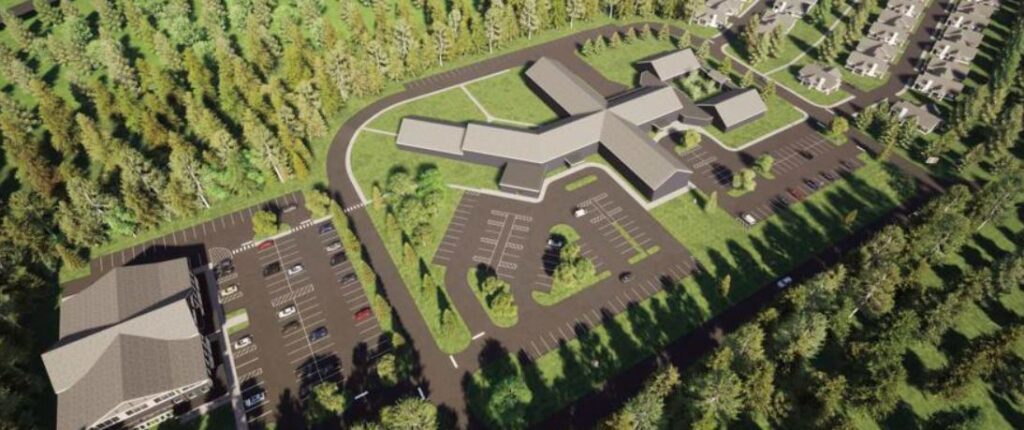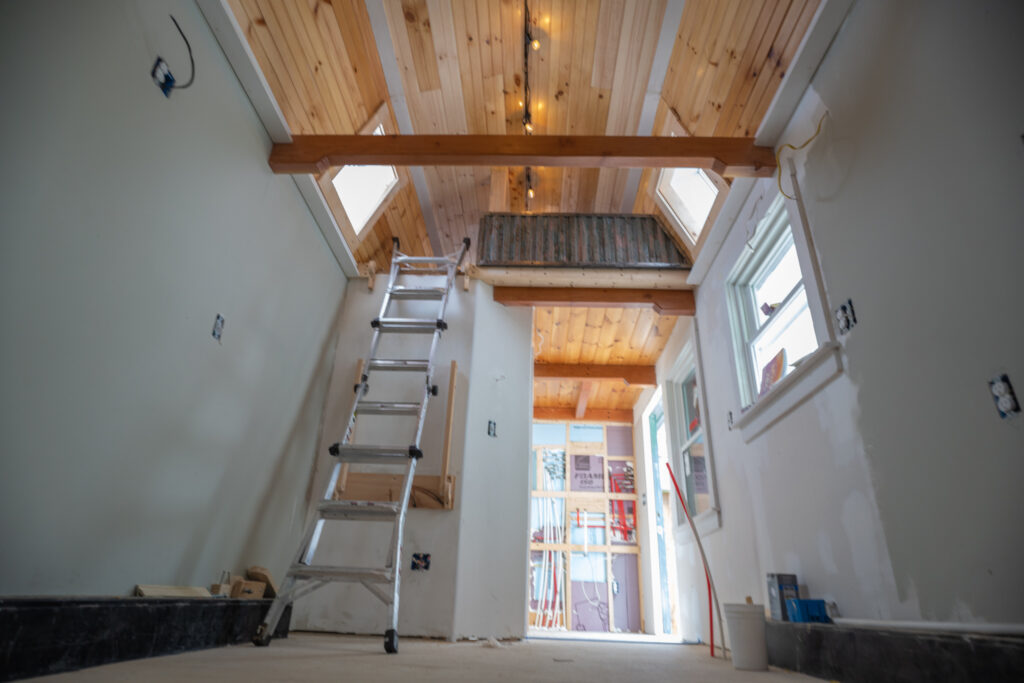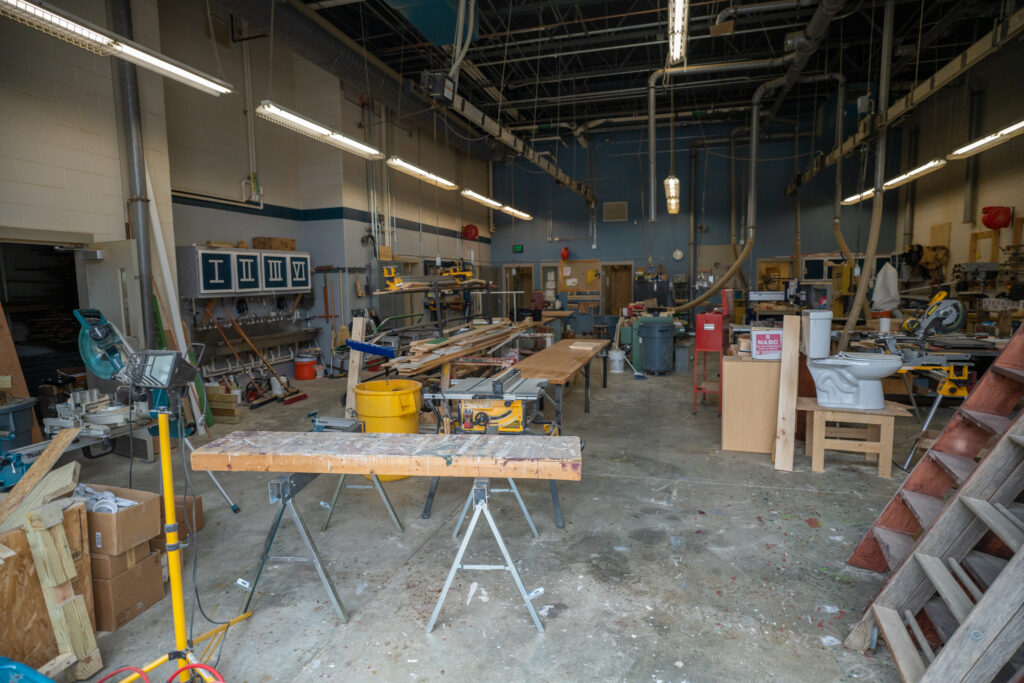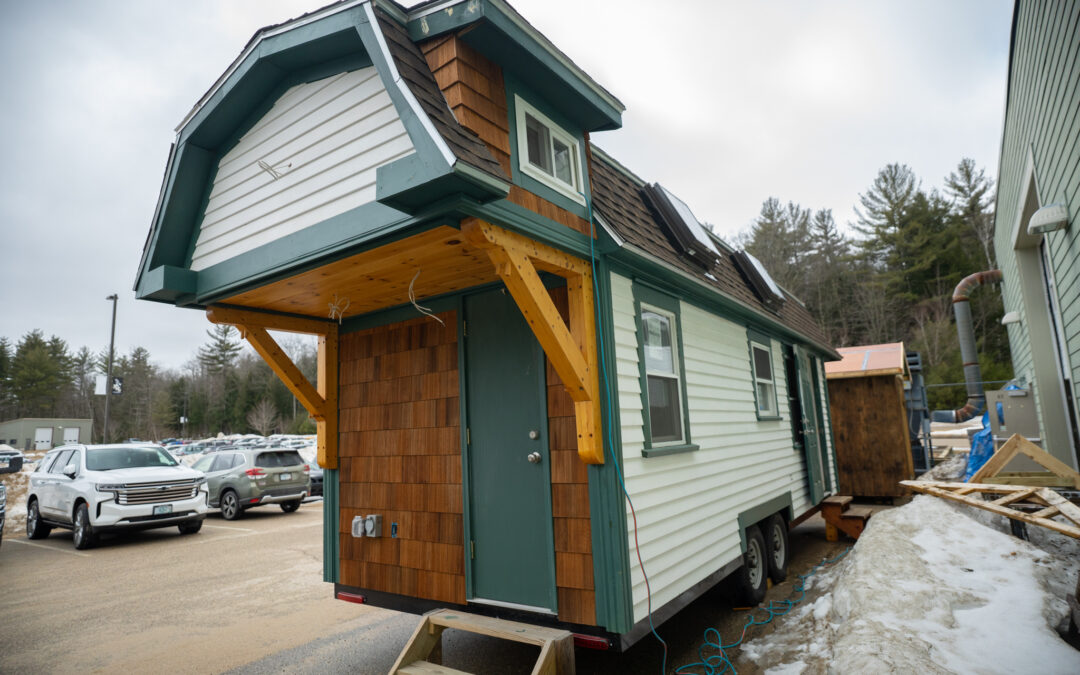What happens to a tourist town when all of the workers leave? Like several other tourist destination communities throughout the country, this question has plagued the Mount Washington Valley for years. However, as we emerge from our homes post-pandemic and find ourselves returning to a world without workers, the lack of affordable housing in the North Conway area seems to be on the minds of many.
I moved up to the Valley full-time to teach at a local elementary school in 2020– aka when things weren’t quite fully re-opened yet, when we had no idea how short-staffed the world would be, or that Russia would invade Ukraine, but I digress. I swapped my hometown local newspaper for the Conway Daily Sun just as a big vote was to take place on the topic of banning non-owner occupied short-term rentals (STRs) in Cownway’s residential areas. At that time, the calls against STRs that I was reading varied from noise complaints and the way STRs disrupt the fabric of community living when you don’t know your neighbor to the way that STRs reduce the number of living spaces for long-term renters and buyers. I suppose I was naive in thinking that the voices of so many local individuals would be heard, but much to my surprise the ban did not pass. Since that vote, you’d be hard pressed to go back and find an edition of the paper that didn’t mention STRs, and rightfully so. It’s a huge issue that is rapidly impacting the community we live in and it seems we have reached a breaking point.
After finishing the 2020-2021 school year as a teacher, I began working full-time at a local restaurant throughout the summer and holiday season. I was stunned at how many people actually asked me why there were only a couple of restaurants open on a Monday or Tuesday. As if labor shortages were confined to this area. It was certainly a reminder that tourism is the lifeblood flowing through the Valley. It’s not a knock on tourists and this shouldn’t be an us vs. them situation. So many local small businesses benefit from those wanting to share in the mountain town experience for a weekend. But lack of affordable housing for the workers making that experience happen benefits no one.

Swimming in a sea of legal jargon, I found out quickly that this issue was riddled with complexities beyond my comprehension. However, what is easy to understand are the many pleas that appear in the letter to the editor sections of the paper or the sheer number of members in a Facebook group for long-term housing and rentals in the Mount Washington Valley. There are over 1,000 people in this group and every day there is another heartbreaking plea for a lead on housing that won’t financially push them out of the Valley. Or force them to choose between a roof over their heads or continuing to own a beloved pet. Some members have also reported living in motels. The dire nature of the situation is amplified by the short notice of rent increase that many renters are faced with. Legally landlords are only required to provide 30 days notice of rent increases of more than 5 percent in the state of New Hampshire while neighboring states, Maine and Vermont, require 45 and 60 days respectively. According to New Hampshire Public Radio, a push for extended notice of rent increase, “…ran into pushback from the Apartment Association of New Hampshire, which argued it was a step toward more aggressive rent control reforms that would negatively affect the state’s rental market.” Regardless of where you stand on the topic of rent control, the fact remains that many people are in a difficult economic situation and it’s a seller’s/landlord’s market. I recently received an email from a local real estate company stating that the average asking price for a home within 4 miles of Bartlett, NH was $416,000. When the minimum wage is $7.25/hour and gas is $4.39/gallon, it’s a strong possibility that residents will struggle with the affordability of an extended work commute. I can’t imagine that the deep pockets who are able to afford property in the Valley are going to be lining up to work the service industry positions on whose backs the economic viability of this area rides. Price gouging workers out of the very communities in which they serve feels like a step in the wrong direction.
The Mount Washington Valley Housing Coalition works to, “…demonstrate how specific zoning changes can attract the development of affordable housing.” They create design plans for mixed income housing projects and submit them to local community legislatures to use as a blueprint for ways to improve the housing situation. While the green space and separate units proposed in their 2021 Charrette are ideal, that likely isn’t attainable for some families. Perhaps an even more realistic and environmentally friendly option, however, is an increase in the number of apartment complexes in town. If anyone argued that it would disrupt the landscape of North Conway, I would be happy to point them in the direction of any one of the vast number of hotels in the area.
Tiny homes, while visually desirable, often come wrapped in red tape. Zoning legalities in the area don’t favor tiny homes. Many argue that 300-400 square feet of living space simply isn’t enough for occupants. While snug to some, it might be all someone else needs. The concept of what is enough is a tad objective, but to each their own. I would argue that our current environmental situation has become a threat to materialism and our accumulation of “stuff”. Many individuals are taking a deeper look at the way they consume and that is causing some to downsize their lives. Understandably, tiny living isn’t considered a great option for a family. However, birth rates have been down trending for several years and continue to fall steadily. Millennials choosing to not have children for various reasons is not uncommon. Economic and environmental instability are contributing factors, so it only makes sense that there is a certain allure within that age group for this idea of tiny living.

Another argument against tiny homes is that they are not financially desirable to contractors. While it doesn’t solve the problem in its entirety, a very interesting resource the Valley has is the work being done at the MWV Career and Technical Center at Kennett High School. Construction Trades Instructor, Paul Cail, and his students have been constructing tiny homes and selling to private buyers over the last several years. I noticed their handiwork parked outside the shop door of the high school last year and have been intrigued by the aesthetically pleasing tiny home of my dreams ever since. I was fortunate enough to see it in person recently while speaking with Paul about the project. He explained how important the affordable housing issue is to him personally. Seeing students experience housing-insecurity has become a driving force behind creating these small structures. Paul hopes that the work they are doing will help be part of the housing solution. With more than two dozen students actively learning the construction trade under Paul’s instruction, the potential for providing housing in the area is there.
No matter which side of the coin you sit on, the solution to this issue is not linear. It will require trial and error, as well as open mindedness toward deviating from the norm. Ultimately, the importance placed on user experience for tourists shouldn’t supersede the quality of life experienced by the local community. While dire in nature, the way the community is rallying around each other on this topic is inspiring and I hope to see that continue to gain momentum. With the court ruling in favor of STRs in the Conway area under appeal, there is hope still for this one step toward housing stability in our valley.
- Special Thanks to Mt Washington Valley Guest Writer Denver DiMarzio


